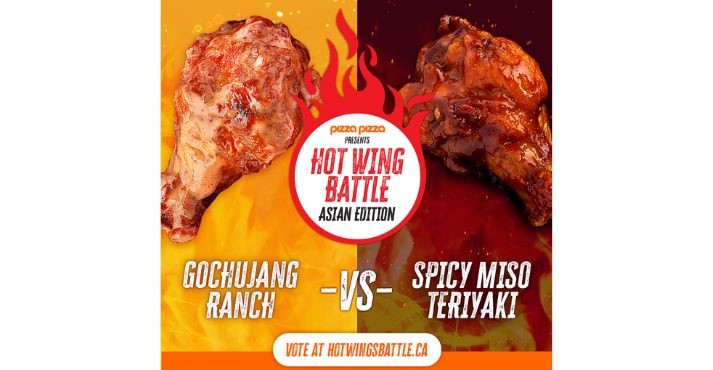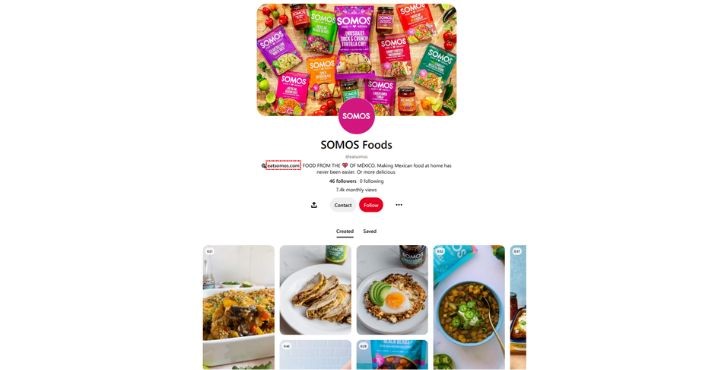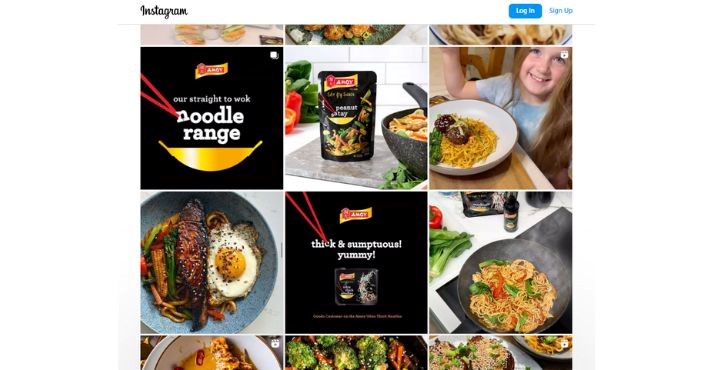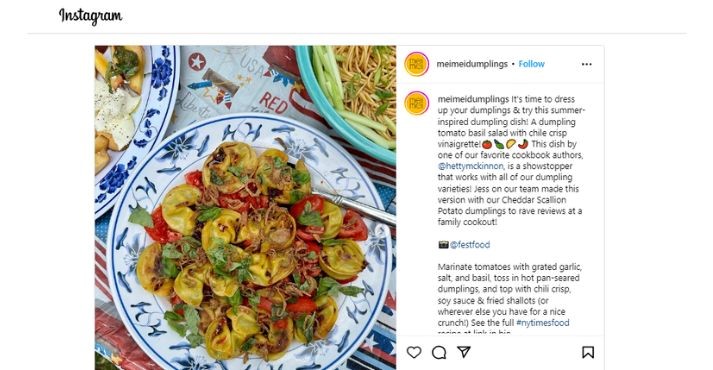Do you run a food and beverage business but don’t know how to increase reach and sales?
It would be best if you familiarized yourself with effective marketing strategies to promote your food brand because success isn’t as simple as serving a delicious dish. It would be best to have a powerful marketing strategy to stand out in the food and beverage industry.
From leveraging the reach of social media platforms and optimizing your website with compelling content, marketing strategies encompass best practices tailored to the unique needs of food businesses, with a primary goal of increasing brand awareness and sales.
In this blog, we’ll explore the best ways to promote a food product or brand and head-on to transform the marketing game for your business.
Along the way, we will share real-life examples and insights to guide you on how to start a food business.
Marketing Strategies to Maximize Your Food Brand’s Reach and Sales
In the dynamic business world, food brands need to adapt strategies that help them navigate tides that risk them being left behind. To navigate this complex landscape, you must know the top promotion ideas to market a food and beverage.
Let’s explore solid marketing strategies that will help you maximize your food brand’s reach and sales, no matter your budget.
1. Brand Launch Ad Campaigns
Advertising and promotion have a unique power to capture the attention and make the taste buds tingle. Ads are the starting point to set the pace to reach your customers and drive business sales.
Brand awareness ads are a powerful tool for attracting new customers to your food business. Food marketing campaigns help you introduce your brand or products to your target audience, who are most likely to make a purchase.
Social media platforms like Facebook, Instagram, and TikTok are ideal for running brand awareness ads in the food industry.
Before you promote a food product in the new market, make sure you’re creating ads that appeal to the audience. Here are some of the best practices for running a successful brand launch ad campaign:
- Visual presentation
- Sensory stimulation
- Storytelling and emotional connection
- Authenticity and transparency
- Humor and creativity
- Call to action
Leveraging these best practices can help food businesses effectively promote their products and attract potential customers through brand awareness advertising on social media and other platforms.

Source: Facebook
For example, Pizza Pizza, a leading quick-service pizza brand, posted a ‘Hot Wing Battle Asian Edition’ ad on Facebook to entice customers to try their newly introduced flavors.
5 Steps for Advertising Your Food Business
Advertising your food product is a great way to create more awareness and spread the word. Here is how you do it.
1. Identify Key Channels
Determine the most relevant advertising channels based on your target audience to ensure maximum exposure.
2. Allocate a Budget
Set a specific food advertising budget to manage campaign expenses effectively.
3. Emphasize Value Proposition
Clearly define and highlight your value proposition and offer to make your ads compelling and attractive to potential customers.
4. Run Ads for 7-10 Days
Plan to run your ads for a minimum of 7-10 days to allow sufficient time for them to reach and engage your target audience effectively.
5. Implement Retargeting
Utilize retargeting ads to re-engage individuals who have previously interacted with your brand or website. It will also reduce your customer acquisition costs (CAC) by reconnecting with potential customers who have shown interest previously.
2. Boost Visibility with Pinterest Shares
It would be best if you had visibility to engage your content and convert it into leads or sales.
Pinterest is a valuable platform for food brands to increase their visibility through organic activities, with 463 million monthly active users.
Sharing products on Pinterest allows food businesses to reach potential customers with relevant interests who can discover, follow, and even purchase their products.
But how do you do it?
Here’s how to build an active community on Pinterest that engages with your content. Follow these five tips to boost visibility on Pinterest.
- Create fresh content every week.
- Stay up to date with Pinterest trends
- Add text overlay to your Pins
- Topic tag before you publish
- Fill in all of your board details
Here’s an example of promoting a food product through Pinterest. Somos Foods is a leading Mexican food brand that maintains high engagement on Pinterest through picture boards and images.

Source: Pinterest
While building relationships and promoting your product to your potential customers is an ongoing process, be authentic and stay relevant. Leveraging Pinterest’s potential, food businesses can effectively showcase their products, connect with audiences, and drive purchase decisions through engaging and visually appealing content.
3. Drive Engagement on Instagram
Instagram is a highly effective platform for marketing food businesses, with 2 billion monthly active users discovering new products and services.
Instagram engagement can Increase restaurant brand awareness and develop strong connections with your audience.
But you must know how to promote food products to gain comments, shares, likes, saves, and other actions. Diversify your food content beyond just product pictures; showcase how your products are used through videos demonstrating recipes.
Leverage your Instagram with these simple, easy steps to promote your food brand.
- Track your engagement: Get a clear idea of your followers and action metrics.
- Create valuable content: Create content that potential customers will share repeatedly.
- Master your aesthetics: Visuals are everything and make your content stand out.
- Embrace video content: Experiment with new formats such as user-generated reels, TikTok-style videos, and event showcases.
- Communicate and engage: Don’t ignore your followers; tap into their messages and reply.
- Use tags: Hashtags and location tags can be added to your images and videos to boost the visibility of your food business.
- Maintain consistency: Don’t lose your potential customers by not posting regularly.
For example, below is an example of Amoy, a food brand’s instagram page with engaging content that resonates with the followers and showcases their unique offers.

Source: Amoy
Don’t forget the basics – more followers on Instagram doesn’t mean your business is doing great. Look for metrics such as ROI, referral traffic, website traffic, on-site traffic, sales, and customer acquisition costs.
4. Spread the Word with Referral Marketing
Referral marketing can be a game-changer for the F&B sector.
Referral marketing is a powerful strategy to acquire new customers by turning existing customers into advocates while maintaining loyalty among the current customer base.
A satisfied customer becomes your brand advocate; you can use them to increase sales and raise brand awareness. Consider these steps to implement an effective referral program for your food brand.
1. Define Rewards
Decide on the rewards you’ll offer, such as free products, store credits, or other incentives, such as discount codes for customers who refer new customers.
2. Create a Well-Designed Referral Page
Ensure your referral page is visually appealing and clearly explains how customers can earn rewards through referrals. (Discounts)
3. Craft Informative Emails
Send well-crafted emails to your customers explaining the benefits of the referral program and encouraging them to share their referral links.
4. Utilize Multiple Marketing Channels:
Promote the referral program through social media, SMS, and web push notifications to reach a broader audience.
An effective referral marketing strategy leverages the power of existing customers to attract new ones, simultaneously fostering growth and customer loyalty.
For example, myBurgerLab offers an exclusive referral program that gives customers a special treat when they get their friends to download the myBurgerLab+ App.

Source: myBurgerLab
5. Craft a compelling Content Marketing Strategy
Imagine the inviting smell of freshly stir-fried chicken, the satisfying crunch of onions and carrots, or the creamy flavor of the delicious sauce.
Have we got your attention?
Food brands come to life through compelling storytelling. But do you want to know how top food brands create effective content marketing strategies that deliver exceptional customer experience in the F&B sector?
Follow these guidelines for crafting an appealing content strategy for your brand.
- Plan blog topics based on customer’s interests
- Conduct customer interviews or surveys
- Create video content
- Optimize your content with keywords
- A/B testing of content marketing
While you do all this, do not forget to view the top trends in Asia’s food and beverage industry for 2023 to ensure you incorporate up-to-date information.
For example, Mei Mei Dumplings shared interesting content from one of their favorite cookbook authors with their audience on Instagram to capture their attention.

Source: Instagram
6. Get More Customers with Google My Business
Google is ranked first among the most visited websites in the world.
Creating your food business profile on Google allows you to reach more customers via Google Search and Google Maps. Google Business Profile is an accessible business listing from Google. It helps you establish a robust local online presence, which is essential to the success of your business. Business owners can also respond to questions from patrons, further enhancing their online reputation.
Benefits of creating a business profile on Google:
- Get discovered in Google search and map
- It provides a great first impression
- Control your online business information
- Build customer trust through reviews
- Improves SEO
Before ordering from a particular establishment, potential customers frequently search for restaurant information online, such as reviews, open hours, and takeaway options. All this can be shared on Google business profiles for your customers to view and gain prominence.
7. Email Marketing Campaigns to Win Customers
To survive in the competitive F&B sector, you must reach out to your customers through different channels. With 4.26 billion email users worldwide, emails serve as a platform to convey brand stories, snippets, coupons, discount vouchers, blogs, and other content to engage customers and drive sales for your food brand effectively.
There are multiple ways your food business can benefit from email marketing campaigns. Some of them include:
- Drive more traffic to your website
- Develop customer loyalty
- Establish your food business brand
- Stay connected with automated emails
- To share promotional offers
Here are some of the best practices for email marketing tailored to the food and restaurant business that you can follow:
- Ensuring emails provide value
- Transforming blogs into email content
- Share featured recipes
- Interactive videos showcasing your product
- 360-degree image or video of the venue
By leveraging the power of email marketing, food and restaurant businesses engage customers effectively, share valuable content, and enhance customer retention and loyalty.
8. Grow Your Food Business via SMS Marketing
We live in a mobile-first world.
SMS marketing might be old-school, but it’s effective!
SMS marketing is an excellent channel for food businesses, especially for conveying time sales and order-related information. SMS offers instant delivery and boasts high engagement rates, ensuring messages reach subscribers and are read promptly, even offline.
Consider these tips when looking for ways on how to promote a food product to customers via SMS:
- Ask for customer consent
- Provide an opt-out always
- Nail your timing
- Keep messages short and sweet
- Announce new products
- Send out coupons
- Birthday greetings
- Seasonal greetings
- Getting feedback
Moreover, compared to other channels, SMS marketing is a highly time-sensitive channel for sharing deals and discounts and informing customers about their orders. Also, it is best for upselling products based on previous purchases.
Conclusion
Remember ROI for your food business. Be constantly looking for effective marketing strategies to promote your food brand. With so much to unlock, the right promotion tactics can continuously scale your business.
By leveraging the powerful marketing strategies discussed in this blog, food businesses can gain a competitive advantage over their rivals and, ultimately, boost success.
So, if you need to level up your game in the F&B sector and enjoy a larger share of the pie, you must stay ahead of the competition and set yourself apart by uniquely marketing your business. Choose strategies that best fit your business needs and effectively reach your customers.













